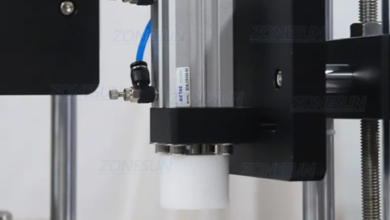
Enhancing Efficiency in Coating Pipelines
Introduction
Paint manufacturing and distribution rely heavily on maintaining quality and minimizing waste. One method increasingly adopted in the industry is the use of pigging system in paint. These systems allow companies to recover residual product, maintain consistent flow, and improve operational efficiency. By optimizing the handling of coatings, manufacturers can reduce costs and enhance sustainability.
This article explores how implementing pigging systems in paint pipelines can bring operational and economic advantages.
Challenges in Paint Pipeline Management
Paint pipelines face several difficulties due to the nature of the product:
- Viscosity Issues: Paints often have varying thickness, making consistent flow difficult.
- Sedimentation: Pigments and additives tend to settle in pipelines, causing uneven quality and potential blockages.
- Cross-Contamination: Switching between paint colors or formulations without proper cleaning can result in contamination.
- Cleaning Inefficiency: Manual or chemical cleaning methods often leave behind residual paint, increasing waste.
See also: Precision and Comfort in Modern Technology
The Role of Pigging Systems
A pigging system in paint helps overcome these challenges by pushing residual product through pipelines or cleaning the inner surfaces. Pigs are devices that fit the pipeline diameter and move through it either manually or automatically.
Benefits
- Maximized Product Recovery: Residual paint is pushed forward, reducing waste.
- Time-Saving: Less need for manual cleaning and chemical flushing decreases downtime.
- Consistent Quality: Reduces cross-contamination between different paint batches.
- Energy Efficiency: Minimizes pumping and pressure adjustments.
Types of Pigging Systems for Paint
Manual Systems
Manual pigs are inserted and operated by personnel. Suitable for small-scale operations or less frequent use.
Automated Systems
Automated pigging integrates with pumps and valves, enabling continuous or scheduled operations. They are ideal for large paint production facilities.
Customized Pigs
Paint type, viscosity, and pipeline diameter determine pig design. Soft pigs are suitable for delicate coatings, while firmer pigs are better for high-viscosity paints.
Pig Materials and Coatings
- Polyurethane: Flexible and abrasion-resistant, suitable for delicate pipelines.
- Silicone: Chemical-resistant and able to withstand higher temperatures.
- Foam or Gel Pigs: Useful for irregular or partially obstructed pipelines.
Selecting the right pig material ensures effective cleaning and minimal risk of pipeline damage.
Implementation Strategies
Pre-Operation Assessment
- Pipeline Inspection: Ensure no severe blockages or damage exist.
- Paint Compatibility: Verify pig material is compatible with paint components.
- Flow Calibration: Adjust pigging speed and pumping pressure for optimal recovery.
Operational Considerations
- Pigging Frequency: Determine based on pipeline length, product volume, and switching frequency.
- Monitoring: Use sensors or manual checks to confirm pigs complete their path.
- Maintenance: Regular inspection prevents wear-related failures and ensures efficiency.
Applications in the Paint Industry
Manufacturing Facilities
Large-scale paint producers benefit from pigging system in paint reduced downtime and minimized color contamination during product changeovers.
Distribution Networks
Distributors transporting bulk paint to multiple sites can recover more product and ensure consistent quality using pigging systems.
Specialty Coatings
Automotive, industrial, or high-value paints benefit significantly from residual recovery and contamination control, ensuring quality and cost savings.
Economic and Environmental Benefits
Cost Reduction
Recovering residual paint reduces material losses and cleaning expenses. Over time, this results in substantial savings.
Sustainability
Less waste and fewer cleaning chemicals improve environmental performance and contribute to sustainability goals.
Operational Efficiency
Automated pigging reduces manual labor, standardizes processes, and helps meet production targets.
Safety Improvements
Minimizing manual cleaning and chemical handling lowers workplace hazards.
Challenges and Solutions
Pig Wear
Pigs require regular inspection and replacement to maintain efficiency. Using durable materials minimizes wear.
Complex Pipelines
Multiple bends or junctions demand careful pig selection and operation planning to avoid jamming.
Viscosity Variations
Different paint types may require adjustments in pigging pressure and speed for effective cleaning.
Future Trends
- Smart Pigging: Sensors and IoT for real-time monitoring and predictive maintenance.
- Advanced Pig Materials: Self-lubricating and chemical-resistant pigs enhance durability.
- AI-Based Scheduling: Optimizes timing and frequency for maximum recovery.
- Eco-Friendly Practices: Reducing chemical use and product waste improves sustainability.
Conclusion
Implementing a pigging system in paint pipelines offers significant advantages for manufacturers and distributors. By improving product recovery, minimizing contamination, and enhancing efficiency, these systems reduce costs and environmental impact.
With careful planning, selection, and maintenance, pigging systems ensure pipelines operate effectively and consistently, supporting higher productivity and product quality in the paint industry.




